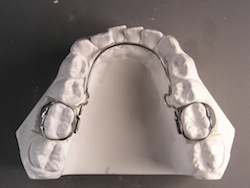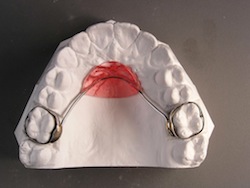Space: a key consideration in a child’s developing bite.
Space refers to the amount of room available for teeth in each jaw. When there’s too little, we refer to that as crowding or as an arch length deficiency. This can be deceiving when kids are losing primary teeth and are in the process of having new permanent teeth erupting. There may be lack of room for all of the permanent teeth, even if the teeth that are present don’t appear to be crowded. When an orthodontist evaluates a child’s bite, space and jaw development are important areas of focus.
What can be done when crowding exists?
The answer depends upon many factors, including the degree of crowding, the quality of the gum tissue, the position of the front teeth, and the width of the arches–which is the U shape defined by the teeth in each jaw. Significant crowding can be relieved by extraction of certain permanent teeth. In mild and moderate cases of crowding, the arches can be expanded by increasing the width of the upper jaw and/or spreading the upper and lower teeth within their bony housing. It is important to note that the bone forming the outer portion of the tooth sockets is very thin, and excessive spreading can cause the bone and gum to recede, resulting in exposed roots. In addition, the upper jaw features a growth center, known as a suture, which can be manipulated with expansion appliances. There is no growth center in the lower jaw.
Are there any secret weapons?
Yes! It so happens that nature has provided some extra space in the primary dentition, and that is referred to as “leeway space”. This refers to the fact that the very back primary teeth (primary 2nd molars) are actually larger than the permanent (2nd premolars) that take their place! In the lower arch, the leeway space is typically 4 millimeters, and 3 millimeters. When the primary 2nd molars are lost, the leeway space is typically lost as well due to forward drift of the 1st permanent molars. However, the space can be saved with the timely placement of space maintainers (pictured below), which work by anchoring the permanent 1st molars in place and preventing their forward drift. Maintenance of leeway space can prevent the need for permanent teeth extractions.

Lower lingual arch appliance

Upper Nance space maintainer
What does this mean for parents?
It’s a good idea to consult with an orthodontist when you first notice crowding in either arch, as timing of interceptive treatment is critical. It’s also very important to maintain the position of the permanent 1st molars whenever primary 2nd molars are going to be extracted, which is occasionally done because of large cavities. Dr. Schur recommends an initial orthodontic evaluation at the age of 6 years, or earlier if issues are noticed. If you have any questions about this topic, or if you’d like to have Dr. Schur evaluate your child’s potential needs, please feel free to contact us by clicking here!


